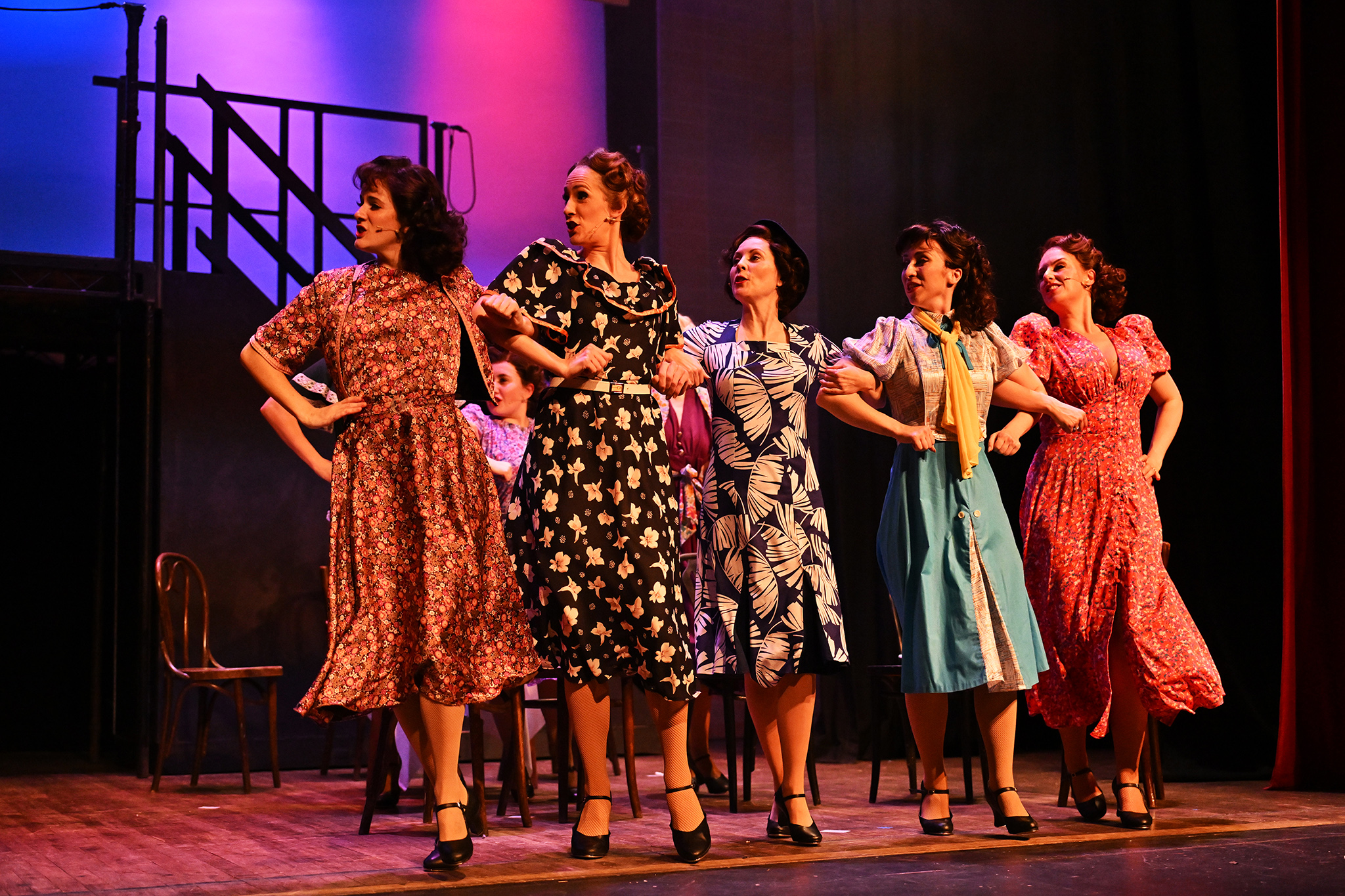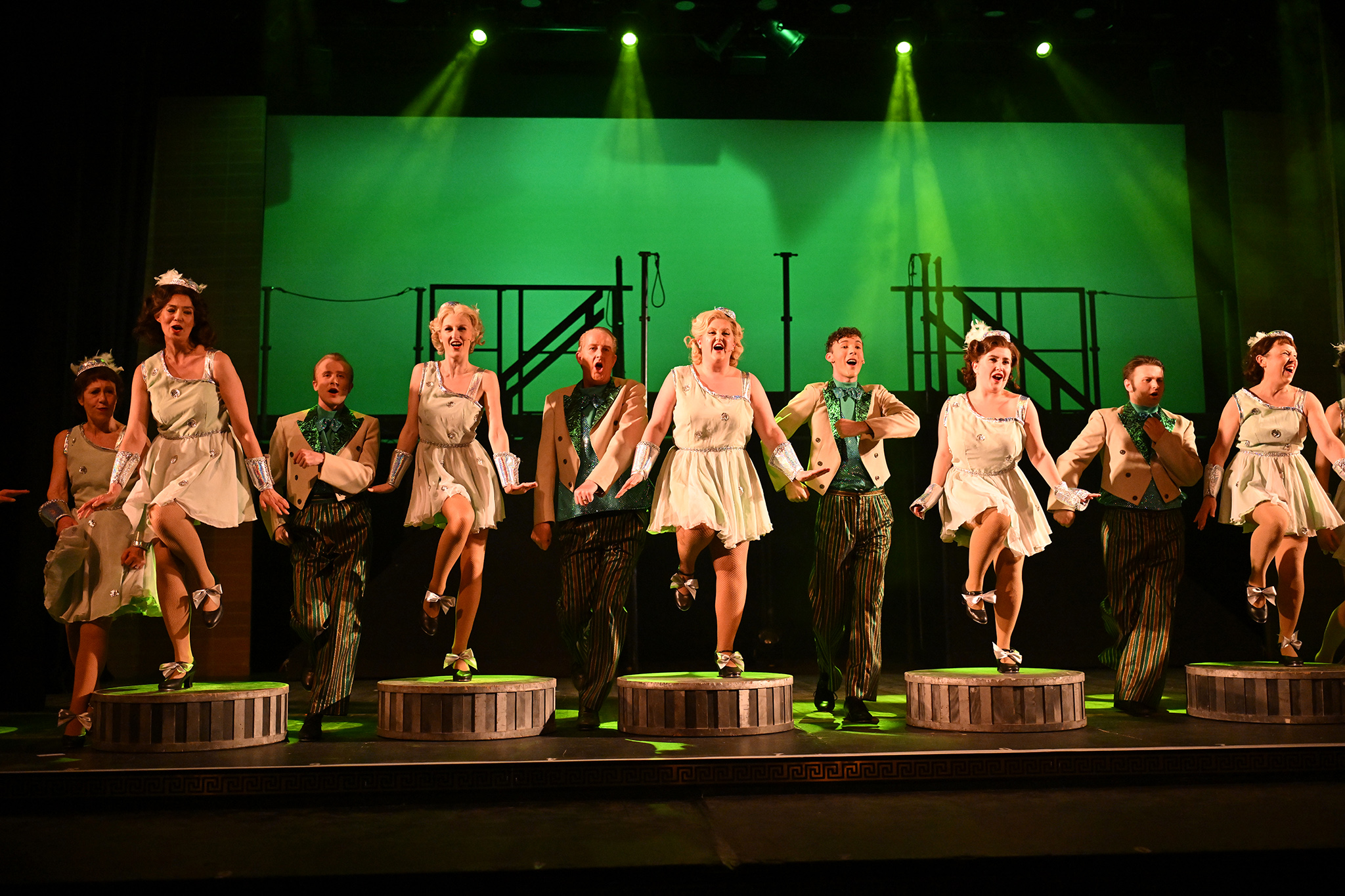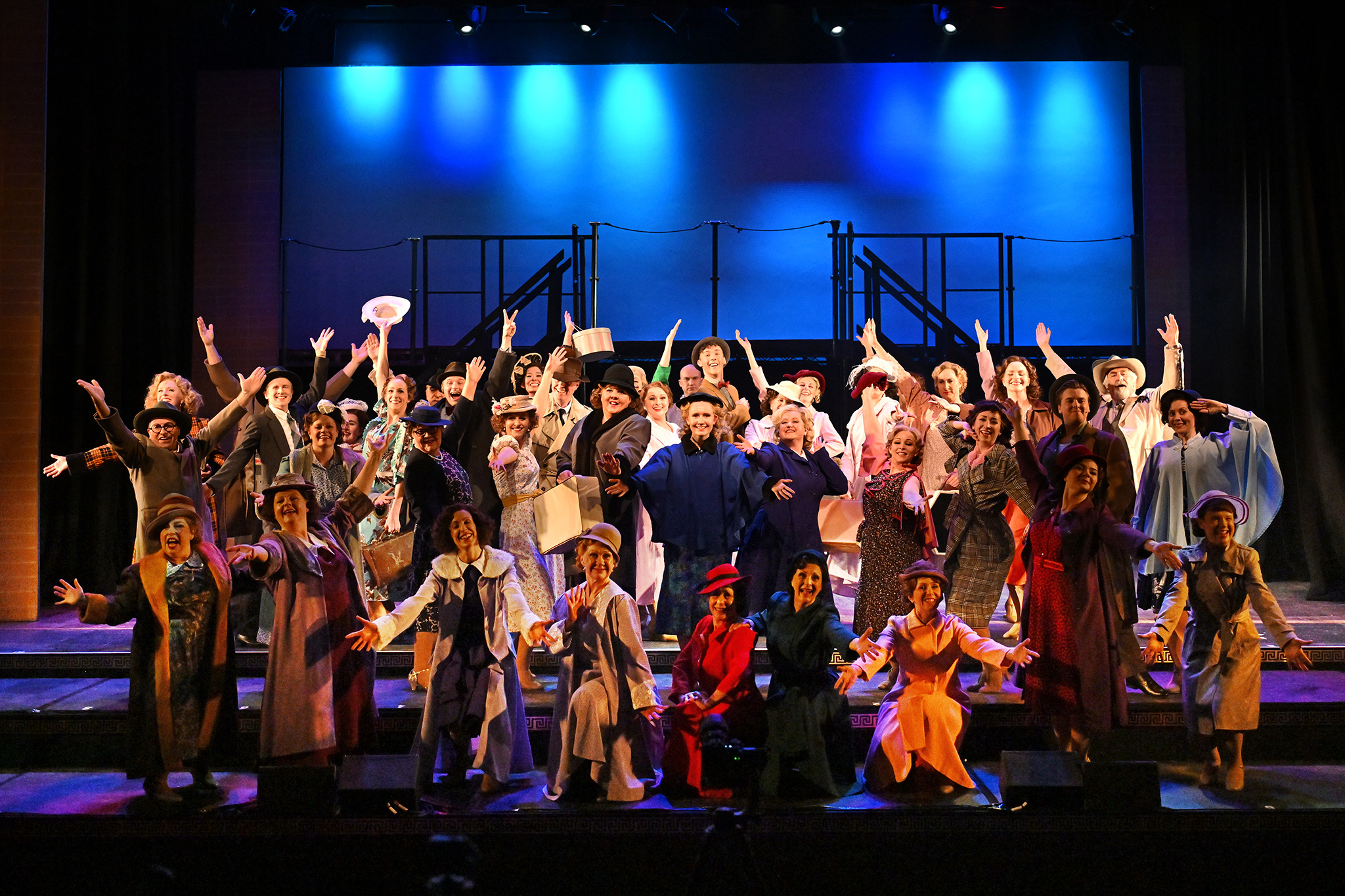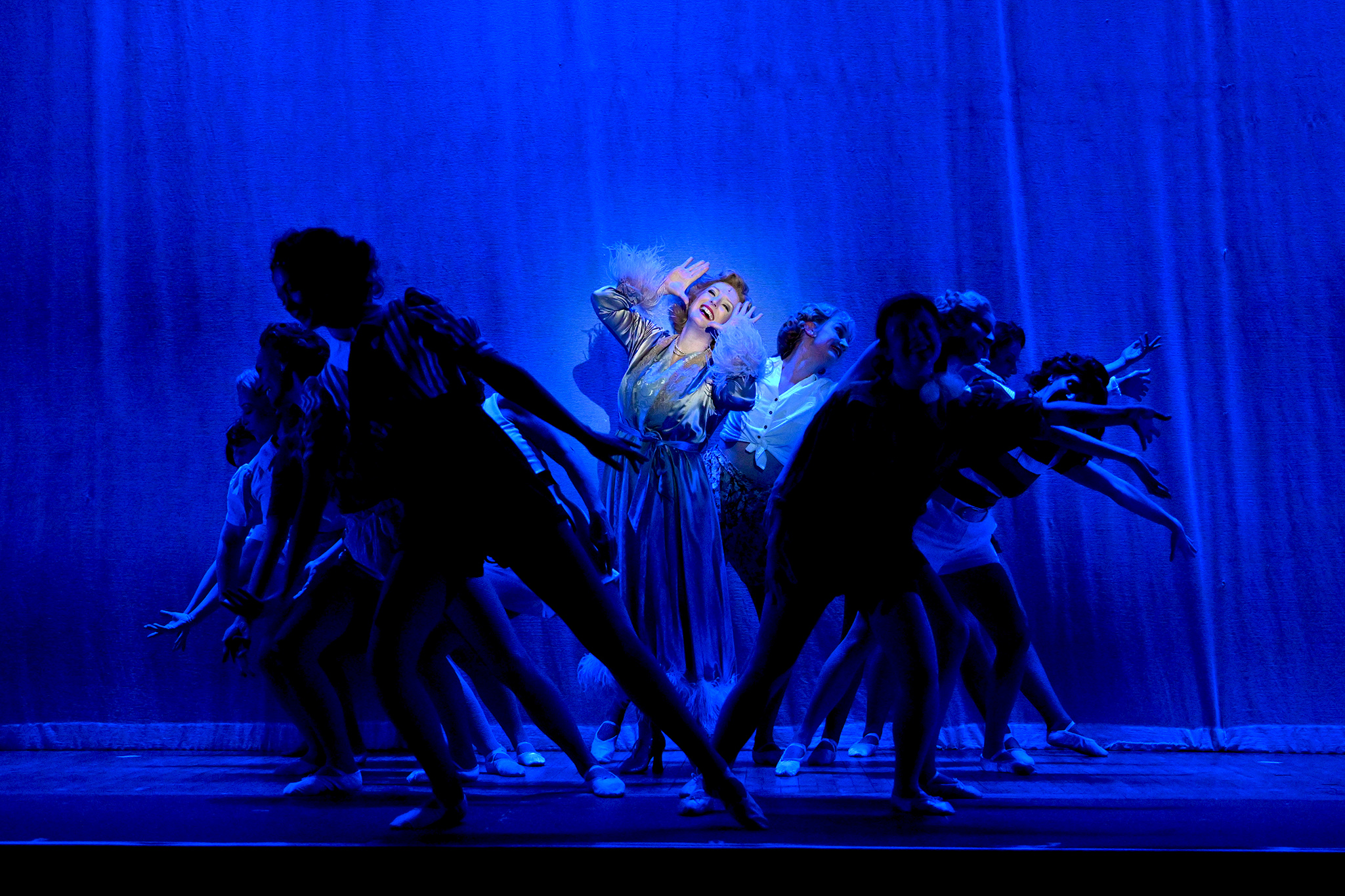42nd Street
Information
- Date
- 22nd March 2024
- Society
- CODY Musical Theatre Company
- Venue
- Princes Hall, Aldershot
- Type of Production
- Musical
- Director
- Devin Mӧller
- Musical Director
- Graham Hix
- Choreographer
- Graham McCarron-Wright
42nd Street is a musical premiered in 1980, based on the 1933 film of the same name, which had music written by Harry Warren and Al Dubin, and choreography by the wonderful Busby Berkeley. It contains many well-known songs, plus a few new ones, evidently. It is the story of a country girl finding sudden fame as the unexpected star of a Broadway musical. Above all, as the involvement of Busby Berkeley in the original film suggests, it is a vehicle for the most exhilarating of tap dance routines.
Aldershot’s Princes Hall is a spacious 430 seat theatre, which CODY easily manages to fill. Its foyer buzzes with excitement before the show, and CODY members provide a very warm welcome.
CODY always offers a fine, large A4 sized programme full of photos; good cast and director profiles; the always interesting list of past productions; a good note from the Chair; information on the history of the society; and a list of musical numbers. This one also contained a synopsis of the plot, and a fascinating piece on the history of the Broadway area.
There were an astonishing number of costume changes in this production, and of course it was a feast for the eyes, so much variety, such an array of colour. There were sparkly outfits, gossamer pastel-shade dresses, rehearsal shorts and tops, outdoor wear with hats and gloves, day dresses, NY cop and US navy uniforms, a black and white striped burglar person, and they all looked splendid and in period.
The set was always very simple, with a raised platform along the rear, and two large staircases which could be moved around to suit the scene, and indeed formed the dressing room walls in a couple of scenes. A dressing table and a chaise longue made this look very inviting. Projections were used cleverly to provide different venues. A large clock transformed the simple set into a station. The stage consisted of three levels, very effective for showing off the large cast of 45. Café tables, suitcases, and for one of the dance numbers, attractive tiny hand mirrors were used. Huge ‘coins’ appeared for ‘We’re in the money’, used for sitting and dancing upon.
The 13-piece orchestra was very well directed by Graham Hix and filled the hall with joyous music. The balance of sound between orchestra and singers was very good.
Choreography by Graham McCarron-Wright was fabulous, so full of exuberance, vim and pizzazz. There’s nothing quite like some well-executed tap dance routines to put a smile on people’s faces, and 600 of us were smiling as we left that theatre!
This production fizzed and whizzed along at a fast pace, oozing style and panache. Based as it was on a 1933 film, it was a somewhat corny story of the young ingenue wannabe star from the sticks overcoming the odds to succeed in double quick time. There was romance, mega-sized egos, desperate producers and directors (this was the depression era after all, money was tight, everything depended on a successful show), and a great spirit of camaraderie amongst the girls in the chorus.
Auditions are under way for Pretty Lady. Peggy Sawyer from Allentown arrives late, but is spotted by Billy, the bright young leading man, who contrives to introduce her to the Producer, Julian Marsh, but to no avail, latecomers are not tolerated. Julian’s show is being bankrolled by Abner Dillon as a vehicle for his ladyfriend, the somewhat faded star Dorothy Brock. Thus the scene is set, one knows already what is going to happen. Ruth Platt gave a fine performance as Dorothy Brock, all ego and ‘I’m the star’ tantrums, sharp antenna to sense an upcoming rival, resentment at knowing that her star was fading, tenderness towards Pat Denning the love of her life, dismissiveness towards her sugar daddy Abner, once he had served his purpose. She was in fine voice too, as we saw in ‘I only have eyes for you’ and ‘A quarter to nine’.
Bert and Maggie, the show’s writers, were well-played by Paul Prebble and Emma Carver. Maggie seemed especially supportive of the girls and soon spotted Peggy’s talent. Julian Marsh was the gruff, strict, bossy, exacting producer, though later there did seem to be a softer side to him. But he understood that putting on such a show entailed military discipline and precision. This was a great performance by James Suttle.
Into this very intimidating scenario breezed Peggy Sawyer, the innocent youngster from the sticks. She got rebuffed, then hired on her own merit after showing off her fabulous dancing skills, then fired after an unfortunate collision with Dorothy, then rehired as the new leading lady once Dorothy’s broken ankle meant that only Peggy could save the show. Lucy Bosher triumphed in this role, her dancing impeccable, she was in great voice, and she made Peggy very believable.
The young bright and breezy male lead, Billy Lawlor, was another fine piece of casting. George Heath had great stage presence, a fine voice, and great dancing skills. He and Lucy Bosher were a sparkling couple.
Of course, however, it was the tap dancing that had the audience spellbound. It was electrifying, and obviously such good fun. Everyone seemed to join in the ensemble numbers, right down to the stage manager. Such energy, such exuberance, such talent, such precision, no wonder there was a standing ovation!
Congratulations to Director Devin Mӧller, Musical Director Graham Hix, and Choreographer Graham McCarron-Wright, this was a sparkling production, with never a dull moment. An evening of pure joy!
 |
 |
 |
 |
© NODA CIO. All rights reserved.

 Show Reports
42nd Street
Show Reports
42nd Street